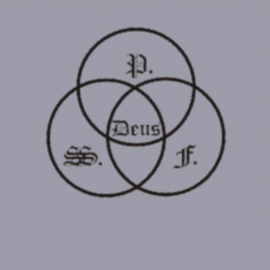"The use of this method of "transcreation" from Sanskrit and Pâli into Greek has been firmly established by Christian Lindtner." (Michael Lockwood, Buddhism's Relation to Christianity, Chennai (India) 2011, p. 250)
"... it is worthwhile to look at the work of Christian Lindtner, Ph.D., author of The Secret of Jesus. Lindtner, a Sanskrit scholar, believes he has proven that much of the Gospel material is anticipated in earlier Buddhist scriptures. There are other noted scholars who agree." (Tom Harpur, Canadian writer and theologian of New Testament Greek. The Pagan Christ.)
"...the task of theology (in the university) is to make us hold unto the object of faith...Jesus Christ, (who) goes before and lies outside the Biblical writings......" (Mogens "Menschensohn" Müller, leading Copenhagen professor of the New Testament, in Kristeligt Dagblad, 9-5-2014, thus admitting that the task of professional theologians, who really know nothing about JC, is to fool us (=you and all those other) ignorant Christian believers.)
"Indisputably the Sanskrit-linguist, Lindtner has done more to establish the literary dependence of the Christian Gospels on Buddhist literary traditions than any other living scholars - and Michael Lockwood´s noble enterprise one step further." (Prof. em. Zacharias Thundy, author of Buddha & Christ. Nativity Stories & Indian Traditions (Brill. Leiden 1993), in Brahmavidyâ. The Adyar Library Bulletin, Volumes 78-78 (2014-2015), p. 726.)
The 27 books of the New Testament, as known, constitute the fundamental holy scripture of Christianity. Without the four Gospels according to Matthew, to Mark, to Luke and to John, Christianity is virtually null and void.
Recent epoch-making discoveries of old Sanskrit manuscripts in Central Asia and Kashmir provide decisive proof that the four Greek Gospels have been translated directly from the Sanskrit. A careful comparison, word by word, sentence by sentence, shows that the Christian Gospels are Pirate-copies of the Buddhist Gospels (combined, of course, with words from the OT). God's word, therefore, is originally Buddha's word.
Comparison reveals that there is no person, no event, no locality mentioned in the four Christian Gospels not already present in the Buddhist Gospels that are, for sure, far earlier in time than their Christian copies.
Christianity is Buddhism for the West |
You become a Buddhist by receieving initiation (uapasampadâ), and by confessing your faith in the Trinity of the Buddha, his teaching and his order. In the Christian version you become baptized (baptisma), and confess your faith in the Trinity Father (Buddha), his son (bodhisattvaa) and the Church of holy men.
The Apostles´s Creed (Symbolum Apostolicum) can be traced back to Buddhists sources. Christian tradition traces it back to Peter, Andreas and the remaining ten apostles. They are all Buddhists: Putras, Aniruddhas, etc.
It was the task of the Buddhist apostles to promote the Dharmacakram all over the world. Mainly responsible for doing so were Peter and Paul. These two are to be traced back to the Lotus Gospel, chapters 3 and 8. Putras becomes Petros, and Pûrnas becomes Paulos or Saulos (= 901 = ho Pûrnas).
Names are slightly changed for the source has to be kept secret. Hence the secret of Christ and the "mystery" of the Kingdom of God, i.e. Buddhism. Even the titles of the main Buddhist gospels can be found in the Greek text of the NT, provided you know how to look and listen and count words and syllables.
The main figure in the NT is the new Tathâgatas, the kathêgêtês, or teacher of Matthew 23,10. There are about 20 puns on Tathâgata(s, sya) in the NT. Indeed, the New Diathêkê is a sûtram about a new Tathâgata. The Sanskrit sûtram is a synonym of the Greek euaggelion. It is thus the duty of serious scholars to trace the Buddhist sources that, combined with Old Testament sources, form the celebrated but little understood mosaic: The New Tathâgata.
From the very start, Buddhist missionaries, mostly unknown, assimilated their promotion of the Dharmacakram to local circumstances, working in several languages simultaneously. It is the same picture in all the countries where Buddhism expanded, typically - and most successfully - by way of "skilful means", or pious deceptions (frays pia). The concept of skilful means is typical of Mahâyâna, as is prayer and confession of sins.
It is in this sense that I claim that Christianity is Buddhism (Mahâyâna) for the West.
| A Buddhist original... |
|
...and a Christian copy |
 |
The Sanskrit
TRi-RaTNaS
becomes the Latin
TRi-NiTaS.
...even the name is copied... |
 |
|